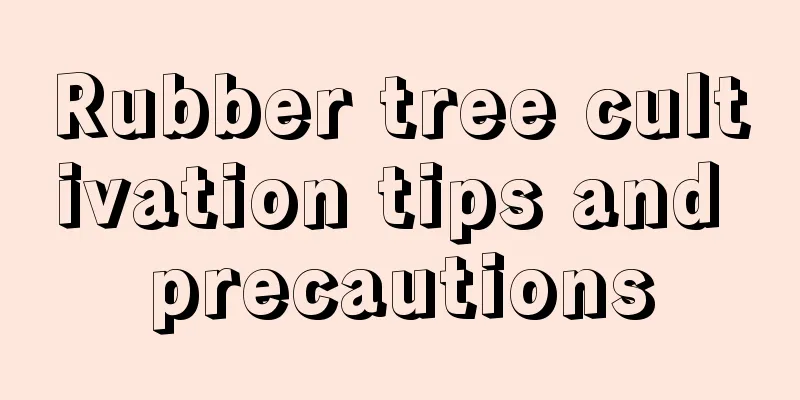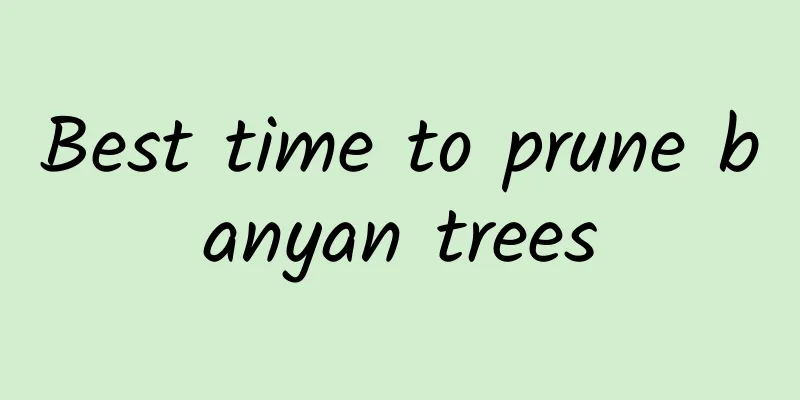Rubber tree cultivation tips and precautions

|
The rubber tree has become a leader among indoor foliage plants with its unique shape, powerful air purification ability and tenacious vitality, and is suitable for home and office decoration. Let’s learn about the cultivation techniques and precautions of rubber trees. 1. Lighting Rubber trees love light and need to be placed in a sunny place indoors to promote photosynthesis and make the leaves thick and dark green. In summer, proper shade is needed to avoid leaf burns. 2. Soil The soil needs to be loose, well-drained and breathable. It can be prepared with 2 parts of leaf mold, 2 parts of garden soil, 1 part of coal slag and a small amount of decomposed organic fertilizer (such as chicken manure and bone meal) to provide sufficient fertility and promote plant growth. 3. Fertilization Add appropriate amount of base fertilizer when repotting in early spring. In summer, apply decomposed cake fertilizer water once every 2 weeks or a small amount of slow-release fertilizer granules every month. Fertilize every 20 days in spring and autumn. Stop fertilizing in winter to avoid root burn due to low temperature. When applying fertilizer, you need to follow the principle of "applying small amounts of fertilizer frequently" to avoid burning the roots with concentrated fertilizer. 4. Watering Follow the principle of "water thoroughly when dry", water when the soil surface turns white, and do not water when it is moist. Water every 2-3 days during the growing season and once every 2 weeks in winter. 5. Pruning When the rubber tree grows to a certain height, it needs to be topped to promote side branches and make the plant fuller. During the growth period, the messy branches need to be thinned out to ensure ventilation and light transmission. 6. Notes Insufficient light will cause the rubber tree to grow too tall, the distance between leaves will become larger, the plant shape will become loose, and its ornamental value will be reduced. Spraying water is only used to reduce temperature and increase humidity, and cannot replace watering. When the temperature is below 15℃ in winter, watering should be reduced to ensure the safe wintering of the plants. The above is an introduction to the cultivation techniques and precautions for rubber trees. Flower lovers who have rubber tree potted plants at home can refer to them based on their growth conditions.
|
<<: Lemon tree cultivation tips and precautions
>>: Cultivation techniques and precautions of Schefflera
Recommend
How to fertilize petunias
Fertilization method 1. If you want the petunia t...
Can fruit trees be transplanted in winter?
1. Is it possible? The temperature is low in wint...
What are the effects of evergreen
Dieffenbachia is a common foliage potted flower w...
How to grow cyclamen in winter
In winter, many gardening enthusiasts tend to cul...
The efficacy and function of lavender
Efficacy and function Ornamental value Featherlea...
When does Caragana bloom?
Caragana flowering period Caragana blooms mainly ...
The role of golden edge tiger pilosa
Ornamental effect This is a plant that grows part...
Cedar Pests and Diseases and Their Control
Diseases of cedar and their prevention and treatm...
Which month is suitable for planting Chinese toon in greenhouse?
When to plant Chinese toon in greenhouse Greenhou...
What to do if black bugs grow on rainbow jade
1. Causes If the place where the rainbow jade is ...
Why do wolfberry leaves turn yellow?
Causes and treatment methods The main reasons for...
How to eat mangosteen? How many mangosteens can you eat in a day?
1. How to eat When eating mangosteen, you need to...
Can salt water be used to pour over peppers?
Can peppers be poured with salt water? Do not wat...
How often should dragon fruit be watered?
How often should dragon fruit be watered? During ...
What flowers are suitable for growing in Zhuhai? What are the city flowers and trees?
1. Zhuhai’s climate characteristics Zhuhai has a ...









